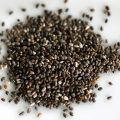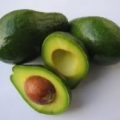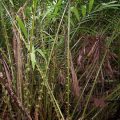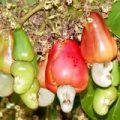Siling labuyo, scientifically known as Capsicum frutescens, is a small but fiery chili pepper that holds a special place in Filipino cuisine. Its intense heat and vibrant flavor make it a sought-after ingredient in various dishes, sauces, and condiments. Siling labuyo is not only valued for its culinary attributes but also for its potential health benefits due to its capsaicin content, which has been linked to boosting metabolism and aiding digestion. This comprehensive production guide will walk you through the process of cultivating and growing siling labuyo, from selecting the right seeds to harvesting and processing the peppers.

Section 1: Pre-Production Considerations
Before embarking on siling labuyo production, it’s crucial to take several factors into account to ensure a successful and sustainable cultivation process.
1. Climate and Location: Siling labuyo thrives in warm and tropical climates. It requires a minimum of 6 to 8 hours of sunlight per day and prefers temperatures ranging from 20 to 30 degrees Celsius (68 to 86 degrees Fahrenheit).
2. Soil Conditions: Well-draining, sandy loam soil with a slightly acidic to neutral pH (around 6.0 to 7.0) is ideal for siling labuyo cultivation. Good drainage is essential to prevent waterlogging, which can lead to root rot.
3. Seed Selection: Choose high-quality, disease-free siling labuyo seeds from reputable sources. Opt for open-pollinated or heirloom varieties for better results and genetic diversity.
4. Growing Space: Plan your planting area based on the space requirements of the pepper plants. Siling labuyo can be grown in pots, containers, raised beds, or directly in the ground, provided they have enough space to grow and receive adequate sunlight.
Section 2: Seed Starting and Germination
Starting with healthy seeds and ensuring successful germination sets the foundation for a productive siling labuyo cultivation.
1. Seed Germination: Start seeds indoors about 8 to 10 weeks before the last frost date. Fill seed trays or pots with a well-draining seed-starting mix. Plant the seeds ¼ to ½ inch deep and keep the soil consistently moist. Cover the trays with plastic wrap or a transparent lid to create a humid environment.
2. Temperature and Light: Place the trays in a warm area with temperatures around 25 to 30 degrees Celsius (77 to 86 degrees Fahrenheit). Once the seeds germinate, provide them with ample light. Using fluorescent grow lights can help ensure strong and healthy seedlings.
3. Transplanting: Transplant seedlings into larger pots when they develop their first true leaves. This step helps the young plants establish strong root systems before they’re moved to the garden.
Section 3: Planting and Care
After the seedlings have reached a suitable size, it’s time to plant them in their final growing location and provide proper care throughout the growing season.
1. Planting: Once all danger of frost has passed and the seedlings are strong enough, transplant them into the garden or selected growing containers. Space the plants about 18 to 24 inches apart to allow for adequate airflow and sunlight.
2. Watering: Keep the soil consistently moist, but not waterlogged. Overwatering can lead to root problems, while underwatering can stress the plants and affect fruit production. Water at the base of the plants to avoid wetting the foliage, which can lead to fungal diseases.
3. Fertilization: Siling labuyo plants benefit from regular feeding. Apply a balanced fertilizer every 4 to 6 weeks during the growing season. Alternatively, you can use organic compost to enrich the soil and provide nutrients.
4. Mulching: Mulch around the base of the plants to conserve moisture, suppress weeds, and regulate soil temperature. Organic mulches like straw or leaves work well for this purpose.
5. Support and Pruning: As the plants grow, they may become top-heavy due to the weight of the peppers. Provide support using stakes or cages to prevent the plants from bending or breaking. Additionally, light pruning can encourage better air circulation and fruit production.
Section 4: Pest and Disease Management
To ensure a successful siling labuyo harvest, it’s essential to be vigilant about pest and disease management.
1. Common Pests: Aphids, whiteflies, and spider mites are common pests that can affect pepper plants. Regularly inspect the plants for signs of infestations, and consider using natural predators like ladybugs or neem oil as a safe and eco-friendly solution.
2. Fungal Diseases: Pepper plants are susceptible to fungal diseases such as powdery mildew and blight. To prevent these issues, avoid overhead watering, provide proper spacing for air circulation, and remove any infected leaves promptly.
Section 5: Harvesting and Processing
Harvesting siling labuyo at the right time and handling the peppers properly are crucial to preserving their flavor and heat.
1. Harvest Timing: Siling labuyo peppers can be harvested when they reach their desired color and size. The longer they stay on the plant, the hotter they become. Harvest green or slightly ripened peppers for a milder heat, or wait until they turn red for maximum spiciness.
2. Harvesting Technique: Use pruning shears or scissors to cut the peppers from the plant, leaving a short stem attached. Be careful when handling the peppers, as their capsaicin content can irritate the skin and eyes.
3. Processing: Once harvested, you can use siling labuyo fresh, dried, or processed into sauces and condiments. To dry the peppers, thread them onto a string and hang them in a well-ventilated area away from direct sunlight. Alternatively, use a food dehydrator or an oven set to a low temperature.
Section 6: Storing and Utilizing Siling Labuyo
Proper storage and utilization of siling labuyo ensure that you can enjoy their fiery flavor long after the growing season has ended.
1. Storage: Dried siling labuyo can be stored in airtight containers in a cool, dry, and dark place. Keep them away from moisture and heat to preserve their flavor and potency.
2. Culinary Uses: Siling labuyo is a versatile ingredient that can be used to add heat and flavor to various dishes. It’s commonly used in sauces, marinades, pickles, and condiments. When cooking with siling labuyo, remember that a little goes a long way due to its intense spiciness.
3. Medicinal and Health Uses: Siling labuyo’s capsaicin content has been linked to various health benefits, including boosting metabolism, aiding digestion, and promoting circulation. However, its consumption should be moderate, as excessive intake can lead to discomfort.
Conclusion
Cultivating siling labuyo is a rewarding endeavor that allows you to experience the vibrant flavors and intense heat of this iconic Filipino chili pepper. From selecting the right seeds to harvesting and processing the peppers, each step of the production process contributes to the final product’s quality and flavor. With proper care, attention, and a dash of culinary creativity, you can cultivate your own supply of siling labuyo to spice up your meals and embrace the fiery essence of Filipino cuisine.






